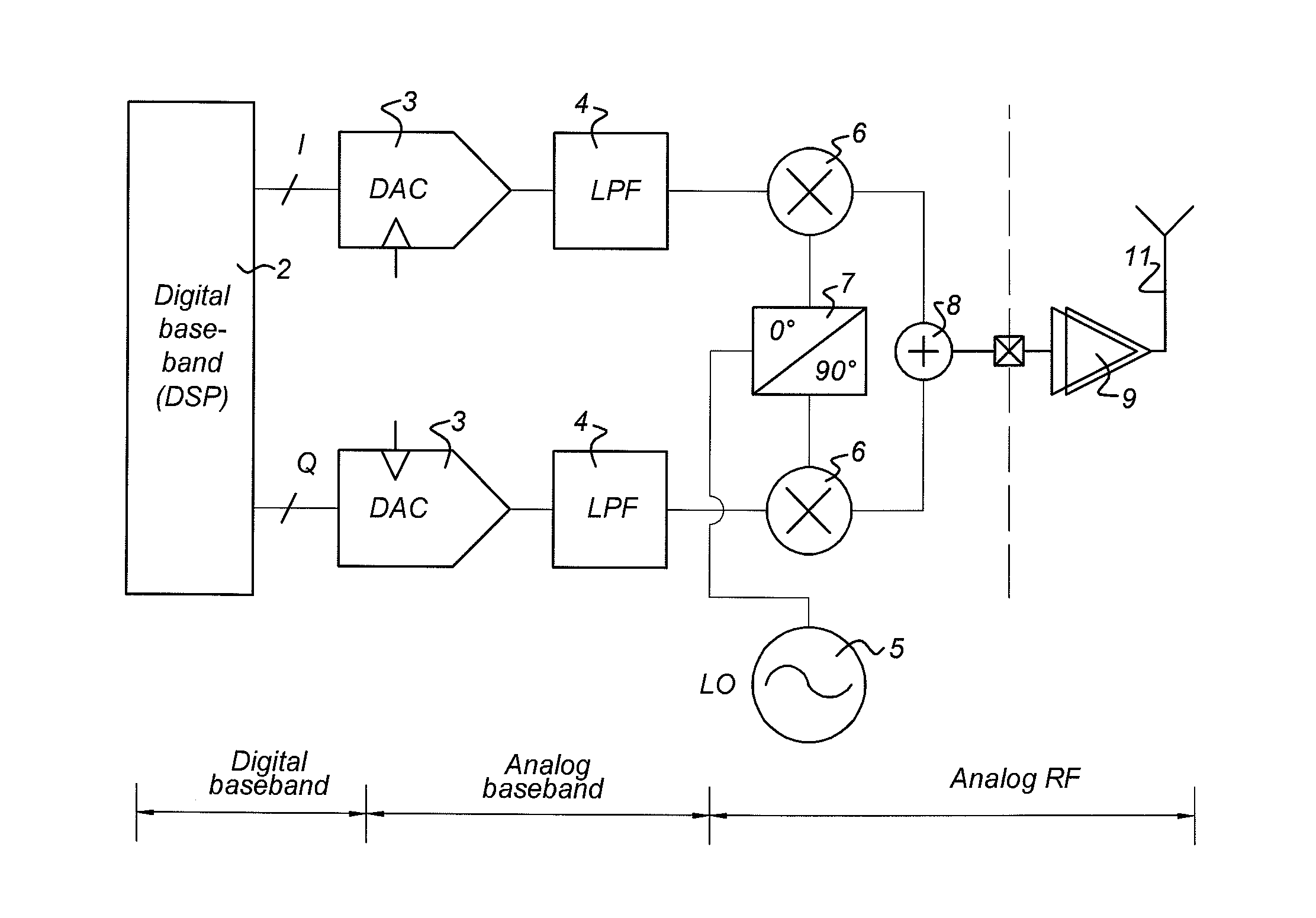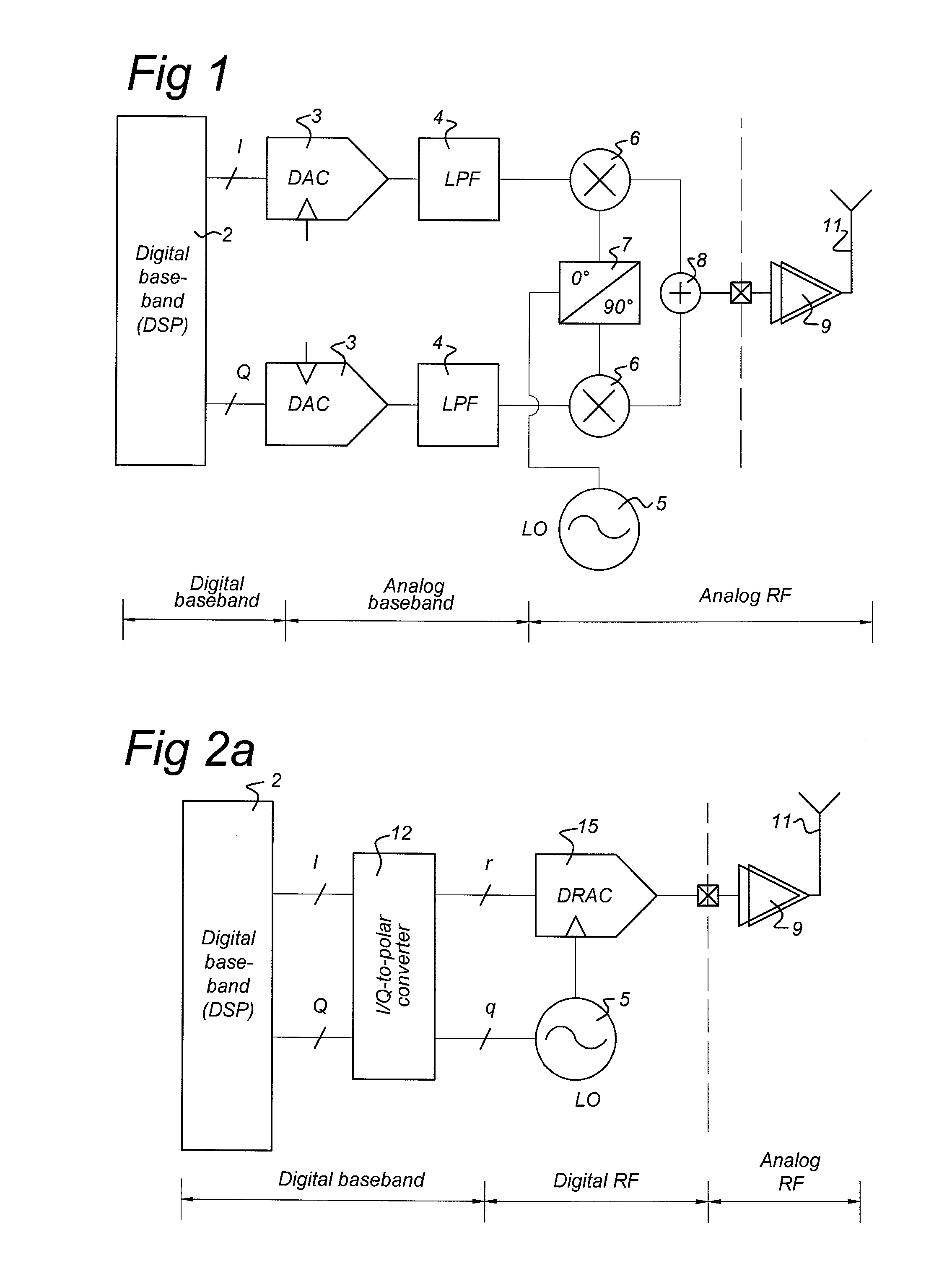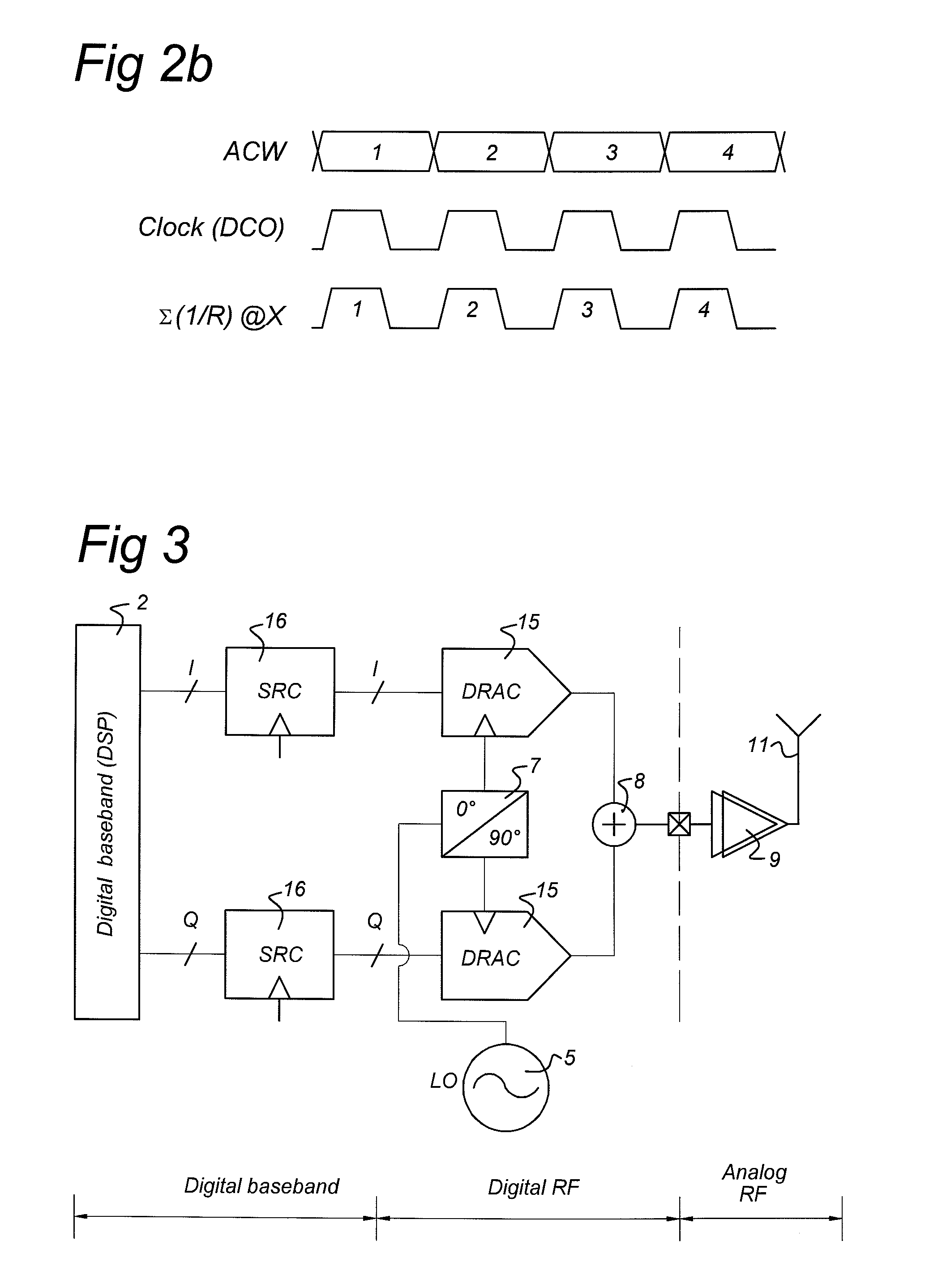Digital power amplifier with i/q combination
a power amplifier and digital technology, applied in the field of electronic circuits, can solve the problems of reducing slowing down the useful life of the amplifier, and not sharing the wonderful benefits of digital scaling with the traditional rf circuit, so as to improve the amplitude resolution of the electronic circui
- Summary
- Abstract
- Description
- Claims
- Application Information
AI Technical Summary
Benefits of technology
Problems solved by technology
Method used
Image
Examples
Embodiment Construction
[0055]Embodiments of the invention relates to a method and system for (digitally) generating a radio-frequency (RF) signal to be transmitted. In accordance with embodiments of the invention, this is accomplished without any intermediate stages or without resorting to polar topology.
[0056]Polar transmitter (TX) topology is a known solution that involves power amplifiers (PA). However, this technique is only proven so far for narrowband systems, and it cannot be readily used for wideband modulation schemes, such as those in WiMAX and 3GPP LTE.
[0057]Embodiments of the invention can be applied in all RF transmission systems, e.g. wireless connectivity, cell phones and base stations. Cell phones or basestations can be achieved using the present invention that feature higher integration levels, better power efficiency (hence longer battery lifetime), and more sophisticated reconfigurability. They can be also advantageously used with antenna arrays, where advantages in the cost, size, powe...
PUM
 Login to View More
Login to View More Abstract
Description
Claims
Application Information
 Login to View More
Login to View More - R&D
- Intellectual Property
- Life Sciences
- Materials
- Tech Scout
- Unparalleled Data Quality
- Higher Quality Content
- 60% Fewer Hallucinations
Browse by: Latest US Patents, China's latest patents, Technical Efficacy Thesaurus, Application Domain, Technology Topic, Popular Technical Reports.
© 2025 PatSnap. All rights reserved.Legal|Privacy policy|Modern Slavery Act Transparency Statement|Sitemap|About US| Contact US: help@patsnap.com



